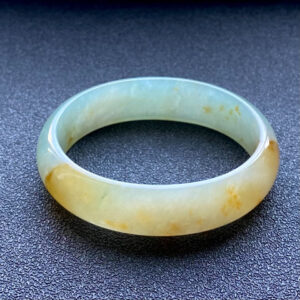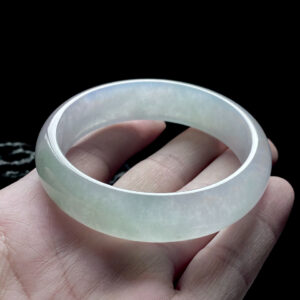Origins of the Concubine Jade Bangle
Dating back to the Tang Dynasty (618–907 AD), the now-iconic “Guifei” (imperial concubine) bangle was born of compassion and artistry. Legend tells that Emperor Xuanzong’s beloved consort, Yang Yuhuan—also known as Yang Guifei—often found traditional round bracelets pressing too tightly on her wrist. To honor her comfort and grace, a master craftsman introduced an oval-shaped jade piece, thinner on the inner side to ease fit around her delicate arm. Delighted, Yang Guifei praised the bangle’s elegance and ordered that future jewelry use this more flattering “imperial concubine” silhouette
Imperial Legacy & Cultural Reverence
Over a millennium later, this elegant shape remains synonymous with royal refinement. Jadeite itself—known as “fei cui” (翡翠)—was first imported into China in the late 1700s, quickly adopted by Emperor Qianlong and Empress Dowager Cixi, who prized its translucent, deep-green beauty. Cixi even famously wore matching jadeite bangles throughout her reign—symbols of authority, longevity, and auspicious power
Story‑Driven Product Description
“Crafted in the elegant concubine style, this icy jadeite bangle echoes a millennium‑old legend: inspired by Empress Yang Yuhuan of the Tang Dynasty, its gently flattened inner curve was designed to embrace her wrist with comfort and grace. Each swirl of soft green flower-like veins dances across its translucent body, as if whispering royal secrets. A refined heirloom—a true tribute to ancient imperial beauty, yet perfect for the modern wearer seeking elegance, cultural resonance, and lasting serenity.”




















评价
目前还没有评价